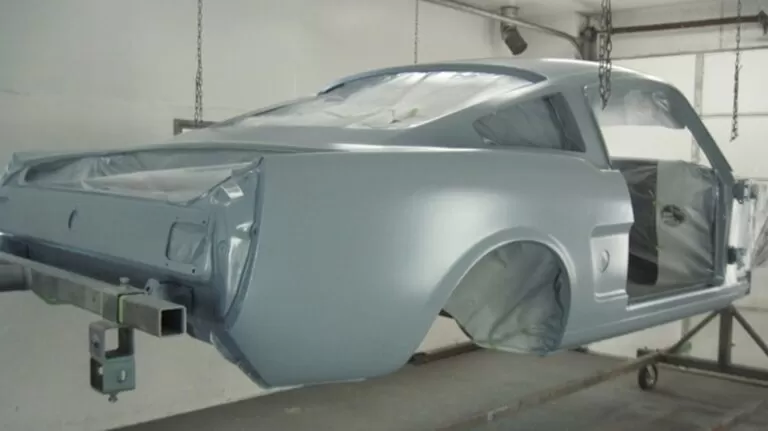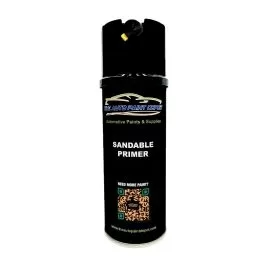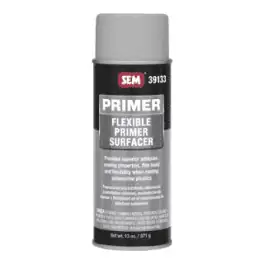Automotive Primer: A Complete Guide on Why its Effective and How its Used

What is Primer?
Primer is a paint-like substance used as an undercoat for the topcoat layer of paint. It is chemically formulated to allow for the topcoat layer to adhere to the vehicle more effectively. Primer essentially prepares the car for painting. In doing so, primer prevents the topcoat layer from peeling or flaking off over time. Along with providing adhesion, primer also helps with rust prevention, filling of imperfections, sanding ease, hold out of color, and increased drying speed.
Primer is a vital component to the longevity and general success of your project. It can be used after sanding the surface, but before applying the topcoat. We are here for you at the Auto Paint Depot for all your priming needs. Our website offers a wide variety of selections when it comes to primers. After reading about the different types of primers, consider which type best fits your project. If you have any questions regarding primers, please feel free to contact us today at (631) 392-1080!
Types of Primer:
- Epoxy– A standard base primer that is great for corrosion (rust) resistance. Does not sand as well as other options.
- Urethane Surfacer– A two-part primer surfacer that is commonly used in conjunction with a base primer layer. This is a great option for filling imperfections, but not as sufficient in corrosion resistance.
- Polyester– This a great choice for use as a filler. Polyester primer is the top choice for filling small scratches. Though it tends to be more brittle than epoxy and urethane primers.
- Urethane Sealer– The best option for a quick seal. Urethane sealer is excellent for sealing a vehicle that is already in good condition. However, it does not act as a filler.
- Enamel– A very affordable selection that is similar to epoxy. It presents a good base for bonding that is also great for preventing corrosion as well.
- Lacquer– This primer will dry faster than all other variations. Lacquer primers help to ease the sanding process.
How to Use Primer
Before starting the painting process, clean your car using specifically formulated car wash soaps and grease removers. This will make sure that any excess debris is cleared off from the car before painting. First things first, you must prepare the surface for priming. Use tarps or paper and masking tape to cover all areas of the car you are not painting. Applying masking tape is similar to using it for moldings.
Next, begin sanding the area that will be primed. For rougher areas use a heavier grit and for smaller areas lower grit will suffice. If you encounter any imperfections such as holes or dips, use filler (putty) to fix the issue. Some primers have the ability to act as a filler, be sure to read the labeling closely. If your primer does have the filling capability, sand over the surface once again after using putty.
Be sure to sand all the way down to the bare metal by getting rid of any rust formation. Make certain the surface is smooth and free of rust after sanding thoroughly. Let the car dry for a couple hours before applying the primer. Drying times vary based on weather conditions. Allotting time for proper drying improves the effectiveness of the primer’s adhesion.
If you are painting a large portion of the car, we recommend using a spray gun. When applying the primer, be sure to accurately apply it evenly across the desired surface. Even application prevents build-up and excess paint from bubbling over. Allow the primer to dry after beginning the next two coats. After the primer is dry, use fine-grit sandpaper to smooth out any mounds or dips that have occurred as a result of the primer. Fine-grit sandpaper will not remove the primer that was just applied. Now your project is ready for the basecoat layer.
Additional Materials Needed for Priming
- Tarp/paper– used to cover surfaces not being painted.
- Masking tape– adhesive used to tape tarp/paper.
- Cleaning supplies– car wash soap, micro-fiber cloth, brush
- Sandpaper- heavy and fine grit to sand desired surface.
- Putty– used to fill imperfections (if primer does have filler ability)
- Goggles– eye protection from potential splashing of paint
- Dusk mask– breathing protection from inhaling harsh chemicals
Final Thoughts
As you can see, the use of primer does not go unnoticed. Its benefits are too much to pass up when painting your car. Be sure to determine what type of primer your project needs. Selecting the best primer for your project will contribute to the end result having increased durability. Take a look at the primers we offer on our website. We are proud to supply a wide range of primers to fit any job. Good luck with your project!
https://theautopaintdepot.com/?s=primer&post_type=product&dgwt_wcas=1

:max_bytes(150000):strip_icc()/car-painting-476836625-5b0c04108e1b6e003e3d0ee5.jpg)


